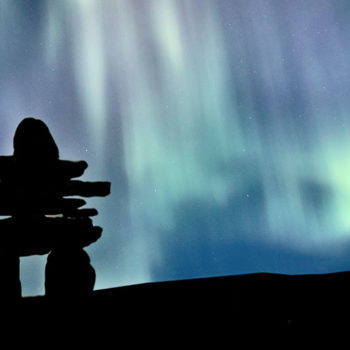How the history and legacy of residential schools are embedded in the NWT curriculum
Note: Northern Studies 10 is a mandated graduation requirement for all students in the Northwest Territories (NWT). Of its five-course modules, ONE is on the History and Legacy of Residential Schools.
Speaking as a teacher of the Northern Studies 10 module on the History and Legacy of Residential Schools pilot and of the final approved curriculum, I truly believe this is one of the most powerful courses to teach. If you work, live, eat, breathe in the NWT, the legacy of Residential Schools is part of your experience; either it’s part of your family’s legacy or that of someone you know.
In 2001, when I first taught this course, it did not have a Residential Schools module. At the time, I thought my students and I shared a common understanding of the settling of the North and its First Nations, Metis and Inuit peoples – the perspective we’d all been taught. However, I soon learned a much different reality.
In 2003, I attended one of many Dene Kede workshops to in-service teachers and began the process of incorporating Dene perspectives into daily teaching. This awoke my interest and it became apparent I was unaware of an important part of my own daughters’ and husband’s history.
In 2010, as a lifelong Northerner and long-term teacher, I was invited to work with a group of knowledgeable Indigenous leaders. The focus was on how best to explore issues related to Residential Schools in school curriculum. I listened to our North’s history and the experiences of our Indigenous people – a history that had been kept in the shadows for so long.
What an experience that was! The raw truth from people I’d known personally and some of whom I’d known my whole life. I sat in a circle and listened as people spoke with such honesty and vulnerability. The naked truth profoundly altered me. I was part of a very special and a very empowering experience. From that time forward, I had knowledge and truth to share, and it was my duty to honour these people.

Study time at Native residential school, (Fort) Resolution, NWT. Credit: Library and Archives Canada, PA-042133
From 2010 to 2013, the curriculum was developed through meetings in true partnership with Indigenous people. This very powerful, HONEST, raw curriculum was built, not just on paper, but also included audio and videos of personal testimonies rife with truth and pain. These are the perspectives and stories we teach.
This curriculum impacts both students and teachers. It touches one deeply through its rich and powerful resources, never seen before, that support seasoned and new teachers. Lessons and planning take into account the possible impact on families and the potential reopening of old wounds that might happen when their child explores these issues in class and at home.
The resources provide guidance and support to ensure the school, community and families are aware that this very sensitive, very personal topic is being ‘let out of its box’. Materials include sample letters, notes to the home, and community awareness campaigns. The curriculum and resources are carefully structured with the intent to be truthful, honest and to honour those with the experience.
Residential School in-service training is now a requirement for all NWT teachers. This professional learning is similar to the intensive early experience I had in the sharing circle with Indigenous leaders. Its powerful impact alters the lives of all who participate. This experience changes perspective and supports teachers in their work with students, colleagues, schools, families and communities. The stories and understandings from these teachings support steps forward in Truth and Reconciliation today and for future generations.
We must learn the history of Residential Schools. We must teach the history of our Indigenous people. We must recognize and validate our truth in the North. If we know better, we do better. It is time to educate ourselves and our students for a better future, together.


